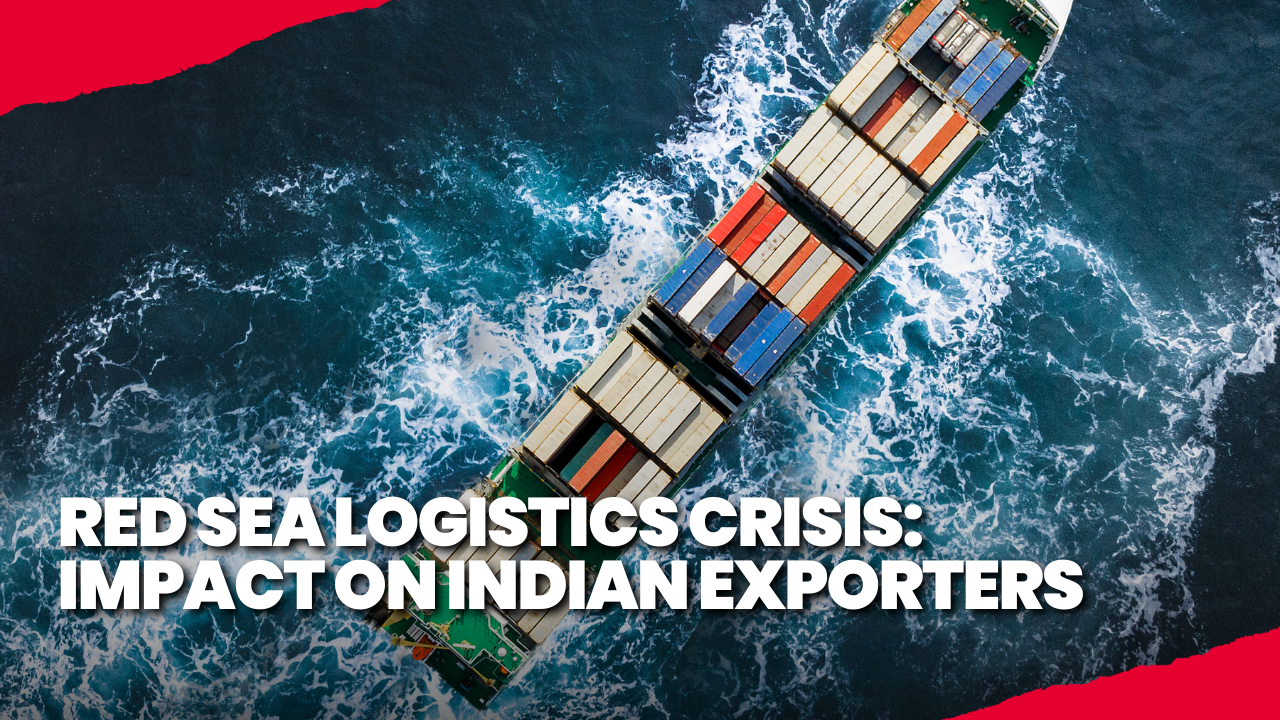
The international supply system is again having problems, and this time they are coming from the Red Sea. There have been many more maritime dangers and issues in this area, a major shipping route between Asia, Europe, and Africa. These challenges can make things take longer, increase logistics costs India is already struggling with, and affect business ties for Indian exporters, especially small and medium-sized businesses.
The export business needs to know how the Red Sea crisis will impact them. We’ll take a look at what this means for your shipments and revenue by simplifying it.
How is the Red Sea performing?
There are a lot of ships going through the Red Sea. This canal links the Red Sea to the Mediterranean Sea, carrying over 12 % of all trade. However, because of ongoing conflicts in the area and attacks on commercial vessels, many shipping companies are now staying away from this route.
They are instead going around the Cape of Good Hope, which is longer and could take an extra 10–14 days. Shipping prices and schedules are being affected by this delay.
This is the main effect of the Red Sea crisis export impact, especially for Indian companies that use this way to send goods to Europe and other places.
Why it matters for Indian exporters
Many challenges have come up for Indian exports, especially small and medium-sized businesses (MSMEs).
Rising Transportation Expenses
One effect that is happening right now is that logistics costs India have gone up. When ships go on longer routes, the cost of fuel and insurance goes up. For MSMEs with small profit margins, this can cut into their earnings or make their products less competitive.
Loss of time and shipping delays
When transit times are longer, goods come later than planned. This causes MSME shipping delays, which could mean bad relationships with buyers, charges for being late, or even the loss of contracts.
Difficulty getting containers
Containers aren’t coming back on time because ships are taking longer routes. Because of this lack of space, MSMEs often have to wait days or even weeks for it, which makes shipping even more delayed.
Higher costs for inventory
To avoid delays, many companies are stocking up on more goods, which takes up cash and warehouse space. These costs make things more complicated for small producers who already have tight budgets.
Also Read This: Exporting From the Sea: MPEDA’s Online Registration & Subsidies
How Can Indian Exporters Make a Difference?
There are ways to adapt and stay successful, even though things are challenging. Here are some practical problems that Indian small and medium-sized businesses can take to protect their exports during the Red Sea crisis export impact.
Change your strategy for the supply chain.
Work with a lot of different freight partners and use a variety of shipping methods. Some exporters are considering using multimodal transport, which joins train, air, and sea routes, to reduce delivery times.
Research Government Support
To help exporters deal with rising transportation costs, the Indian government has set up a number of schemes. Take the initiative to use FTP schemes that offer subsidies, duty drawbacks, and financial help.
Get better at making predictions.
MSMEs should work closely with logistics partners to get the information in time and get a good idea of how long it will take to get things. Planning ahead can help you deal with MSME shipping delays better and avoid unexpected events.
Maintain Communication with Clients Internationally
Openness is very important. Tell your foreign customers about any possible delays, and if necessary, change the terms of delivery. Apologies after the fact aren’t always appreciated by clients as much as upfront communication.
How Indian Exporters Can Prepare for the Next Phase
This situation shows how weak multinational supply chains can be. But it’s also a chance for Indian producers to rethink their supply chains and make them stronger. It can help a lot to take on digitization, invest money into technology, and work with Export Promotion Councils (EPCs). This simplifies operations and helps manage increased logistics costs India due to longer shipping routes and international instability.
This is more than just a short-term problem for small producers. Logistics is changing constantly, and companies that change now will be better prepared for what might happen in the future.
Wrapping It Up
The Red Sea crisis export impact is true, and Indian exporters, especially MSMEs, have been hit the hardest. India’s logistics costs are increasing, and small and MSMEs are having more trouble with shipping delays. It’s important to stay aware, prepared, and flexible.
MSMEs can still do well in difficult times by looking at other options, getting help from the government, and focusing on clear communication. It’s never easy to trade with other countries, but being smart about navigating always makes a difference.
FAQs
The problem is caused by more attacks and conflicts on commercial ships in the Red Sea. This leads ships to take longer routes, which makes it more expensive and takes longer for Indian exporters.
Small and medium-sized businesses (MSMEs) have to pay more for things like freight, fuel, insurance, and keeping inventory, which makes their products more expensive in international markets.
They can start planning packages early, work with a variety of logistics partners, stay in touch with buyers all the time, and look into government initiatives that can help them with exports.
Also Checkout Our YouTube Channel: @limeinstituteofexportimport






